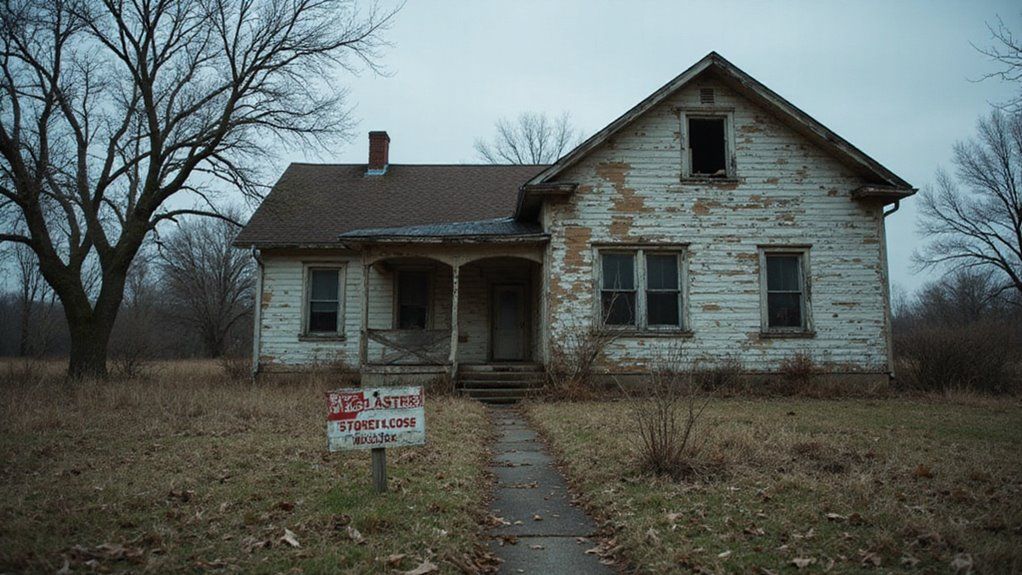Understanding the Foreclosure Process in Oklahoma

Foreclosure can be a dark cloud over Oklahoma homeowners struggling with missed mortgage payments. It’s a tough reality many face. Fear and uncertainty can creep in when bills pile up. Understanding this process is vital to protect your home.
This stress can grow fast if you ignore default notices. Deadlines tighten, and the risk of losing your home rises. Anxiety builds as options seem to shrink. Don’t let this spiral out of control. But there’s hope with the right knowledge and action.
Understanding the foreclosure process in Oklahoma is your first step. Guidance exists to navigate deadlines and explore solutions. Stay informed totyku This blog will guide you through Oklahoma’s foreclosure process to help save your home.
Key Takeaways
- Default in Oklahoma starts with missed mortgage payments, triggering written notices from lenders about owed amounts.
- Notice of Election and Demand (NED) signals foreclosure intent, demanding full payment with debt details and deadlines.
- Foreclosure sale date is set post-judgment, published locally, and directly notified to borrowers for response.
- Right to cure allows payment of overdue amounts before auction, with options like loan modifications available.
- Foreclosure sale is a public auction; post-sale, surplus funds or short sales may be possible with lender approval.
A Detailed Breakdown of Foreclosure Process in Oklahoma
As you navigate the foreclosure process in Oklahoma, you'll first encounter critical steps like Default and Initial Notification, followed by the Notice of Election and Demand (NED). You'll need to stay informed about the Sale Date and Notification, while also understanding your Right to Cure and the potential for a Rule 120 Hearing.
Let's break down each of these stages to ensure you're fully prepared for what lies ahead. Additionally, exploring options like quick home transactions can provide a speedy solution to avoid the devastating consequences of foreclosure.
1. Default and Initial Notification
Understanding Oklahoma's foreclosure process starts with knowing about default and initial notification. Default happens when you miss mortgage payments. It’s a serious issue that risks your home. Causes might include financial struggles or job loss. If facing hardship, act fast to prevent worse outcomes.
Once in default, lenders will use notification methods to alert you. They send written notices about owed amounts. These notices also state the time to fix the default. Don’t ignore them; they’re your first chance to respond. If you act quickly, you can protect your property.
2. Notice of Election and Demand (NED)
The Notice of Election and Demand (NED) is a key step in Oklahoma’s foreclosure process. It shows the lender’s plan to foreclose on your property. You will get this document from the lender or their attorney. It demands full payment of the overdue amount. If you cannot pay, the foreclosure will continue.
Oklahoma’s laws ensure you receive a clear notice with debt details and deadlines. Review the NED carefully for important information. If you act quickly, you can seek legal help or negotiate. This is your chance to protect your rights. Don’t delay in responding to avoid worse outcomes.
3. Sale Date and Notification
This stage is vital in Oklahoma's foreclosure process. After court approval, you get a formal sale date notice. The property sale is usually set at least 30 days post-judgment. This notice appears in a local newspaper and comes to you directly. If you ignore it, you risk missing critical updates.
Use Alert Systems like legal notices or online tools to track changes. With Timeline Planning, mark these important dates to stay prepared. Staying active is key, as missing notices could harm your response. If updates occur, ensure you adjust your plans promptly.
4. Right to Cure
In Oklahoma, the right to cure lets you stop foreclosure by paying overdue amounts before the sale. You can reinstate your mortgage if you cover defaulted payments, fees, and costs by the day before the auction.
If full payment isn’t possible, explore options like loan modifications or repayment plans. Lenders must now clearly notify you about this right due to recent legal changes. Act quickly, as missing this chance could mean losing your home to foreclosure.
5. Rule 120 Hearing
Understanding a Rule 120 Hearing is vital during Oklahoma’s foreclosure process. This hearing lets a court check the lender’s foreclosure right. If you’re involved, knowing the steps can help you. You must attend and be ready to act. Missing it might harm your case. Procedures guide how to show evidence or fight the foreclosure.
The Rule 120 comes from Oklahoma’s legal system. It ensures fairness for both borrower and lender. If you learn these rules, navigating the process becomes easier. Stay active and seek legal help. A lawyer can boost your stance in this key stage.
6. Foreclosure Sale
A foreclosure sale is a key part of Oklahoma’s foreclosure process. It involves a public auction at the county courthouse. If you’re interested, you must act quickly to participate. Start by researching the property’s value carefully. Look at similar sales and check the home’s condition. This helps you avoid paying too much.
Next, plan your bidding approach with caution. Set a clear budget before the auction begins. Begin with a low bid to stay safe. If others bid high, don’t get emotional and overspend. Arrive early to watch other bidders closely.
Stick to your limit no matter what happens. Oklahoma law demands payment in cash or certified funds right after winning. So, ensure your money is ready beforehand. With good preparation, you can handle this intense process. If done right, you might gain a great investment.
7. Post-Sale
After a foreclosure sale in Oklahoma, focus on the next steps. If you’re the former homeowner, know your eviction rights. Once the court confirms the sale, eviction may follow if you don’t leave voluntarily. The new owner must follow legal rules for eviction. This gives you a short time to negotiate or move out.
Also, look into Surplus Funds after the sale. If the sale price is more than the debt, you might get extra money. This happens after liens and costs are cleared. File a quick request with the court to claim these funds. Stay alert and act fast to protect your rights.
Can You Sell a House in Foreclosure in Oklahoma?
Yes, you can sell a house in foreclosure in Oklahoma. It is a challenging process, though. If you act fast, selling before the auction may prevent total loss. You must get lender approval for a short sale. This happens if the sale price doesn’t cover the mortgage. Time is crucial, so list your property quickly.
To boost success, ensure accurate property valuation for a fair price. Offering buyer incentives can attract quick offers. These might include help with closing costs. Consult a real estate expert for guidance. A legal advisor can also help with Oklahoma’s laws. If you plan well, a smooth sale is possible. Quick home cash sales can provide rapid financial relief during this critical time.
Conclusion
If you’re facing foreclosure in Oklahoma, acting quickly is crucial. Understanding your options can protect your home. Time is limited, so don’t delay in seeking help.
If you’re considering a fast solution, we buy houses for cash. This option can help avoid foreclosure stress. Contact us to discuss your situation and explore possibilities.
We at Tulsa Home Buyers are ready to assist you. If you need urgent help, reach out today. Let us guide you through this challenging time.
This is paragraph text. Click it or hit the Manage Text button to change the font, color, size, format, and more. To set up site-wide paragrapTulsa Home Buyers • May 7, 2025h and title styles, go to Site Theme.
Ready to work with Tulsa Home Buyers?
Let's connect! We’re here to help.
Send us a message and we’ll be in touch.
Or give us a call today at 111-222-3333


